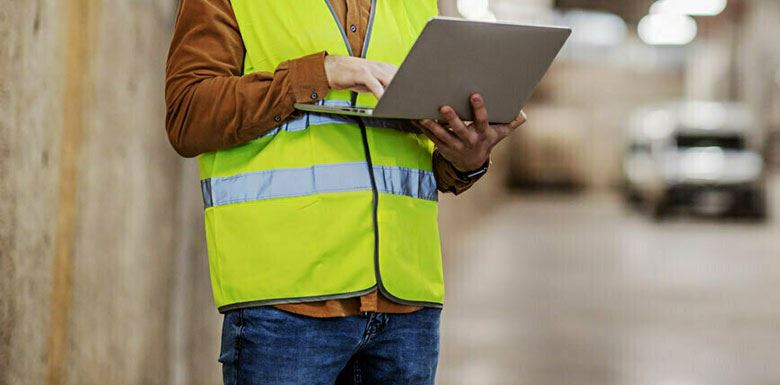Site safety: How to deal with hazards on a building site
In this articleWhether you’re on track to become a builder, have many years of experience in another construction role or have started your own construction company, it’s crucial for everyone to know how to deal with hazards on a building site.
After all, it’s one of the most dangerous workplaces, and while it isn’t possible to remove hazards completely, there are ways they can be managed to keep both workers and the public safe.
Who’s responsible for construction site safety?
The principal contractor has overall responsibility for managing health and safety on a construction site. Officially, their job role is to plan, manage and monitor the construction phase of a project involving more than one contractor.
However, everybody working on a construction site plays a role in ensuring construction site safety and needs to follow the procedures put in place.
Common construction hazards
There are numerous possible hazards on a construction site; below are some of the most common ones you should be aware of:
- Working at heights
- Loud noises
- Possible exposure to asbestos
- Slips, trips and falls
- Electricity
- Moving objects
- Hand-arm vibration syndrome (HAVS)
- Material and manual handling
How to empower workers to understand and recognise hazards
As we’ve mentioned, it’s important for everyone to do their part in ensuring the safe running of a construction site. This all starts with proper training and education.
Training sessions involving real-life examples of how to identify and handle a potential hazard. These are not only engaging but can also help workers put the training into practice. This could be further tailored to different situations that may come up, depending on the job role and working environment of those being trained.
One of the best ways to ensure workers feel empowered is to foster an environment of trust and open communication in which they’re encouraged to ask questions and speak up if they think something isn’t right, without fear of blame or judgment.
Clear signage communicating potential hazards and safety requirements around areas of the construction site can also serve as visible reminders and promote the importance of safe working practices.
How to ensure construction hazards are dealt with safely
The Health and Safety Executive (HSE) recommends a five-step process for managing health and safety risks in the workplace:
- Identify hazards: This involves identifying potential hazards that may cause harm, ranging from physical and psychosocial to chemical and biological risks.
- Assess the risks: After identifying potential hazards, you need to figure out who might be harmed and how. For instance, this may include those working on the construction site and the public.
- Control the risks: Once you’ve determined potential hazards and those who it may impact, you’ll need to assess your current safety procedures and whether there’s any further action that needs to be taken. This may include getting rid of the risk altogether or implementing more safety measures.
- Record your findings: Make sure to record the hazards, and risks, and what you’re doing to control them in a risk assessment, a legal requirement for organisations with five or more employees.
- Review the controls: All health and safety controls that have been put in place should be reviewed regularly as standard. This is a particularly important step to ensure that they’re still effective and that no new potential hazards have developed, especially if there have been updates to the construction site. Any changes should be reflected in the risk assessment.
Construction site safety best practices
- Require the use of personal protective equipment (PPE): Key PPE on a construction site includes hard hats, hi vis clothing, steel-toe-capped boots, gloves and safety goggles.
- Promote organisation and cleanliness: Whether it’s ensuring walkways are kept clear or storing away tools properly, site housekeeping should be maintained to prevent slips, trips and falls.
- Ensure equipment is regularly inspected: All equipment, PPE and machinery used should be regularly inspected for defects and safe use.
- Encourage a safety-first culture: Workers should understand their role in ensuring construction site safety and the procedures involved with identifying, reporting and dealing with hazards.
- Restrict site access: Where possible, restrict entry to hazardous zones. This can be enforced by physical barriers, access control systems and surveillance technology.
- Plan emergency procedures: All workers should be made aware of what to do in an emergency, such as how to raise the alarm, evacuation routes and first aid points.
- Offer ongoing training: Providing regular refresher training can help to reinforce key points, as well as meaning that workers will have the most up-to-date site safety knowledge.
- Cover your business with builders’ insurance: Another best practice measure is to make sure you’re covered by appropriate builders’ insurance. This guarantees your construction business is protected against on-site accidents and other potential risks.
Become a Trusted Trader
When customers see you displaying our logo, they'll know you're a trader they can trust
Find out more




